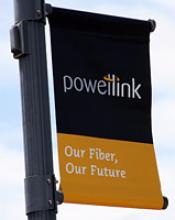Powell, a small community in Wyoming, has
bought its own network from the investors who financed it [Powell Tribune], eighteen years ahead of schedule. For a short history of Powellink, see
Breaking the Broadband Monopoly.
The decision, unanimously agreed to by City Council, came from the realization that the City's reserves were earning very little interest while they were paying a higher interest rates to those who financed the network. So they decided to invest in themselves.
Under the new agreement, Powellink will become a fifth enterprise for the city, joining the electric, water, waste water and sanitation enterprises. The other four enterprises will loan Powellink the $6.5 million, and payments from service providers using Powellink — such as TCT — will go back to the enterprises to pay off the loan.
City Administrator Zane Logan had previously told me that he thought Powellink was a much better approach to attracting jobs to the area than the approach frequently used by communities - tax breaks to companies in return for creating jobs. In the Powell Tribune article, he explained how this approach allows Powell to be more self-reliant.
Logan said he believes the new agreement will help Powell during a difficult economic climate. The state cut its funding of cities and towns this year, and sales tax revenues are down.
“We’re trying to help ourselves and not be dependent on the state,” he said. “The Legislature is saying cities need to take care of themselves, and I like to think that Powell is doing that.”
Local cooperative TCT had the right to another four years of exclusive operation as the sole service provider but gave that up, meaning the network will now be open access. In return, TCT does not have to guarantee revenue to the City (as it agreed to do in each year it was an exclusive service provider).
These changes come about as
Cablevision bought Bresnan, the cable incumbent that had radically lowered rates to compete with Powellink. It will be interesting to see how Cablevision continues or changes company policy in Powell.
Photo courtesy of Ernie Bray








